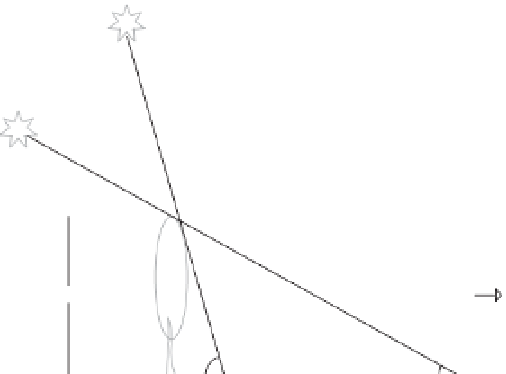Agriculture Reference
In-Depth Information
21
June
21
December
h
= 76.5° 21 June
h
= 29.5° 21 December
H
North
h
h
Horizontal
D
Fig. 4.23.
Shadows created by an object (a tree) at noon during the summer and winter solstices. D,
Length of the shadow; H, height of the tree;
h
, elevation angle of the Sun (see Fig. 2.8). Latitude: 37°N.
(D = H cotangent
h
).
SR
SR
29.5°
Horizontal
North
45°
45°
45°
27°
27°
27°
Fig. 4.24.
A greenhouse prototype with an asymmetric roof, oriented east-west, with angles of 45° on
the south side of the roof and 27° on the north side, does not generate shadows between spans at noon
in the south of Spain (37°N), in the winter solstice. This is because the elevation angle of the Sun (
h
) is
approximately 29.5°. The higher angle of the south-facing roof (45°), where most of the radiation is captured
on these dates, induces a high transmissivity (see Fig. 4.19). SR, Solar rays (Castilla
et al
., 2001).
27°
27°
27°
27°
27°
27°
5.0 m
N
3.5 m
6.0 m
Fig. 4.25.
An efficient solution to achieve a good transmissivity in autumn-winter, at an affordable cost,
in low-cost multi-span greenhouses for the south of Spain is to build symmetrical spans, with roof slopes
1:2 (equivalent to angles of approximately 27°), oriented east-west. Although this greenhouse is less
transmissive in the winter solstice than the greenhouse with an asymmetric 45°/27° roof shown in
Fig. 4.24, it is easier to build, cheaper and offers less resistance to the wind (Soriano
et al
., 2004a, b).
















